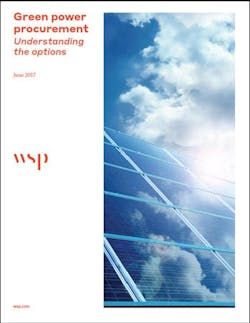Over the last several years, the desire to integrate renewable energy purchasing into enterprise sustainability and energy management programs has increased, and available options have significantly evolved. Various factors are driving organizations to consider renewable energy procurement, including energy cost savings, ambitious carbon reduction goals, and/or public commitments to procure renewable energy. Additionally, the number of companies taking action by setting greenhouse gas (GHG) science-based targets and/ or committing to source 100% of electricity from renewable sources by signing onto the global RE100 initiative has continued to grow. It is increasingly becoming evident that green power is no longer a distant aspiration, but is instead an essential component of any organization’s successful sustainability and energy program.
For organizations interested in transitioning to green power, available options are not always clear and the most viable choice is often difficult to identify when accounting for an organization’s specific goals, financial restrictions, and physical location. Add in the standards and guidance from the Federal Trade Commission (FTC) and RE100 around
communicating these purchases, and the process of balancing priorities becomes even more difficult. The following discussion provides an introduction to the various options available for green power procurement and discusses benefits and special considerations for each one.
This analysis focuses primarily on green power options in the United States, though most of the options described here are also available in other countries, with some variation. It
should be noted that green power is a subset of renewable energy, limited to energy resources with the ‘highest environmental benefit’ including solar, wind, geothermal, biogas, eligible biomass, and low-impact small hydropower systems, as defined by the U.S. Environmental Protection Agency (EPA). Renewable energy more broadly includes additional technologies such as waste to energy and largescale hydropower. Additionally, RE100 and Green-e provide best practice criteria for green power and for making credible claims on its use. These criteria include projects that have been developed within the last 15 years to contribute new capacity, are geographically matched to the market of consumption, have production volumes that are tracked using a reliable attribute tracking system, provide an exclusive ownership and claim to the attributes, and provide production volumes (vintage) that are matched to the time period being claimed.
